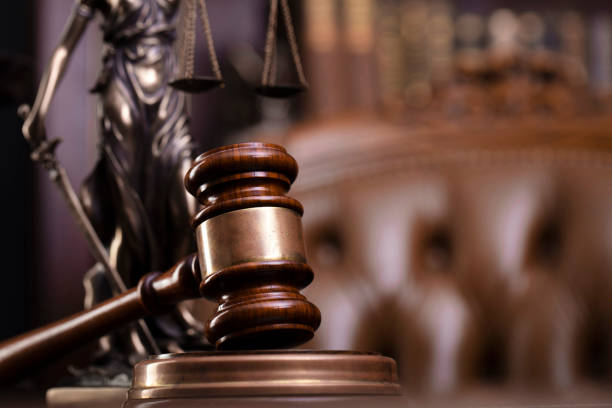
There is no longer any doubt that Canadians are facing a serious problem: a majority of the nine Supreme Court judges, (five at least), are trendy and politically correct and are prepared to ignore the law passed by Parliament and legal precedents, and use their position as appointed, unaccountable judges to change the law to suit their own personal ideologies.
The Supreme Court’s Assumption of Power
The Supreme Court of Canada is known for blurring the line between legislative and judicial functions instead of upholding the rule of law. This blurring started with the 1992 case of Schachter v. Canada, in which the Supreme Court gave itself the authority to write-in or delete words and expressions in legislation to make the legislation supposedly “Charter compliant” despite the fact that these changes altered the meaning and the clear intent of Parliament. In other words, the Court assumed a distinct legislative role by providing new “rights” in the Charter, based on nothing more than its own personal, progressive ideology.
This disruptive judicial behaviour has led the courts to push every “hot button” social issue, leading to striking down legislation that is based on Canadian history, and its Judeo-Christian values and morality. In abandoning that history and traditional values as well as legal principles, judges have brazenly substituted their own values and morality, which reflect their progressive bias and agenda. This has occurred many times on many different issues, including physician-assisted suicide, pornography, the definition of marriage, abortion, religious freedom, prostitution, sexual orientation, and illegal drug use (legalizing drug injection sites). All these decisions and others were made without the support, approval, or consent of the majority of Canadians. These decisions lack an in-depth intellectual analysis and apply only a superficial interpretation of the law to reach their own desired conclusion, according to their own ideology.
Judges Changing Canadian Society
There is no denying that by using the Charter, Supreme Court decisions have completely changed the legal and social fabric of Canadian society. For example, sexual orientation was not a protected right written into the Charter, but this did not stop the courts from putting such protection into the Charter. In the 2018 case, Trinity Western University v. Law Society of Upper Canada, a majority of the Supreme Court concluded that homosexual rights had priority over religious rights, despite the fact that the latter had been expressly written into and guaranteed in the Charter.
Also, many judges have become openly hostile to religious freedoms and have deliberately restricted religious rights. This became apparent when the questionable public health orders that contravened the Charter during COVID were upheld by the courts. For example, shutting down religious services during the pandemic lockdown was declared a “reasonable limit”, but, at the same time, liquor stores, pot dispensaries, abortion clinics, and big box stores, such as Costco, Walmart, etc. were allowed to operate. The Courts have held that many civil rights recognized and protected by the Charter could be suspended during COVID lockdowns, such as the right to refuse consent for medical treatment, freedom of speech, the right to association, and mobility rights, all of which were undermined and ignored.
The development of “hate speech” jurisprudence by the Court is another example of “fundamental freedoms” guaranteed by the Charter that are now taking second place to those who claim their “right not to be offended” by those who exercise their fundamental freedom of free speech and expression. This development is indicated in Saskatchewan Human Rights Commission v. Whatcott, in which the Supreme Court clearly indicated a preference for protecting homosexual “rights” over Mr. Whatcott’s Charter rights to religious belief and expression.
This progressive activism by the Supreme Court was confirmed as a fact at a press conference on June 22, 2018, when Chief Justice Richard Wagner stated that he was very proud that the Canadian Supreme Court is the most progressive in the world.
The Notwithstanding Clause
Fortunately, the Charter does provide a brake on judicial activism to protect Canadians from judicial overreach and judicial arrogance. The Notwithstanding Clause (s. 33) permits the provinces and Parliament to apply this clause to exempt laws from Charter decisions for a five-year period, which period can be reinstated indefinitely. This clause protects our laws from judicial interference based upon spurious Charter claims. In a parliamentary democracy, s. 33 is a legitimate check on judicial power in that it curbs judicial overreach to widen the law in accordance with their progressive perspective. This Notwithstanding Clause was written into the Charter at the insistence of the provincial premiers, who wanted to ensure that the elected legislatures would have the final word on legislation, rather than appointed, unaccountable judges. The unruly judges we are witnessing today indicate that the premiers showed great foresight in placing the Notwithstanding Clause in the Charter.
Progressives Hate the Notwithstanding Clause
It should come as no surprise that Progressives hate the Notwithstanding Clause because they want the woke progressive decisions of the court to remain in place. They forget that Canada’s constitutional system includes checks and balances between the executive, legislative, and judicial branches of government. The fact is that the Notwithstanding Clause is a legitimate check and balance against judicial tyranny and decisions that lack accountability or a semblance of popular consent. Politicians must exert their political will to apply the notwithstanding clause and this must be supported by the public to offset the inevitable rejection of its use by the left-wing political elites.
